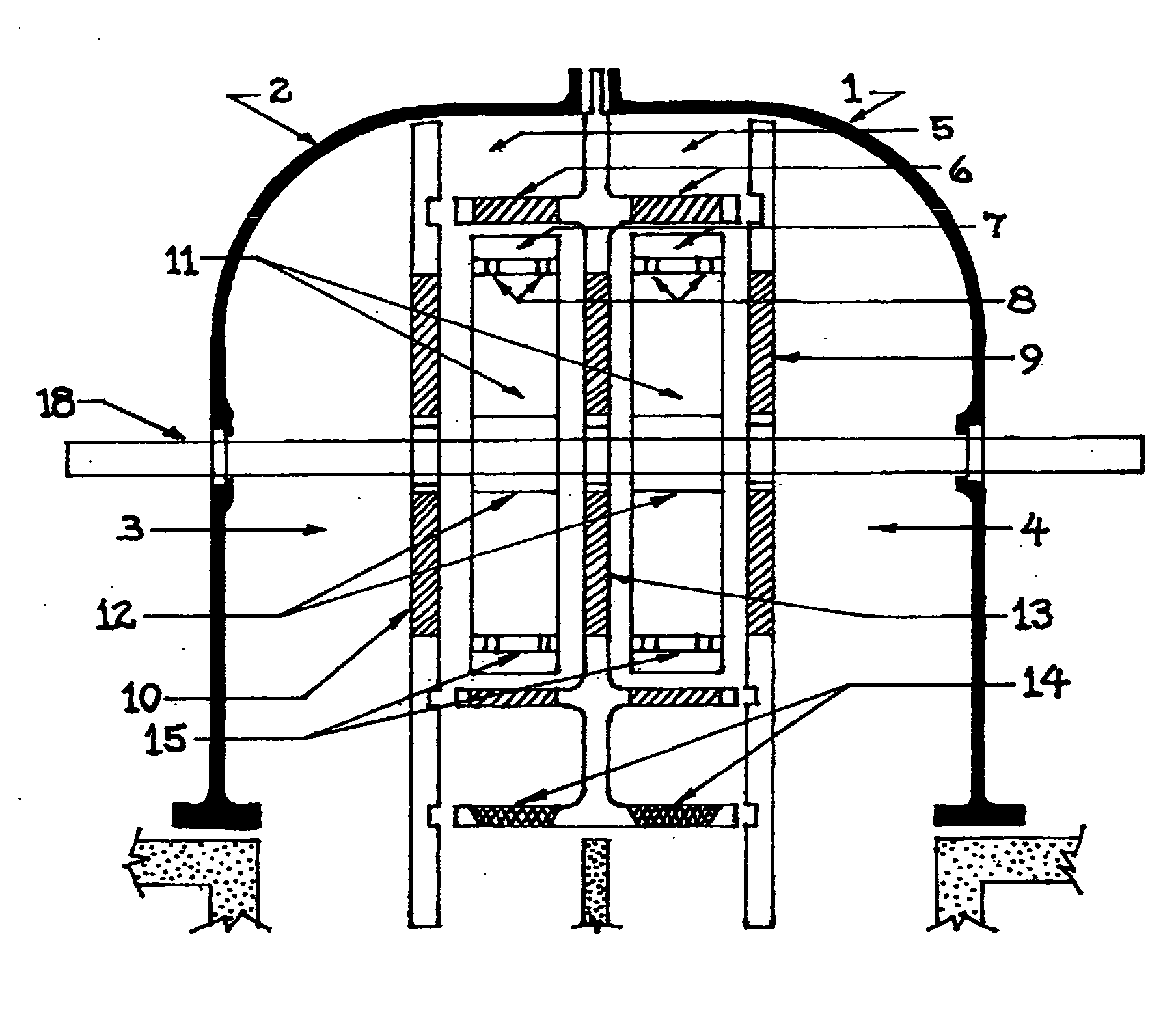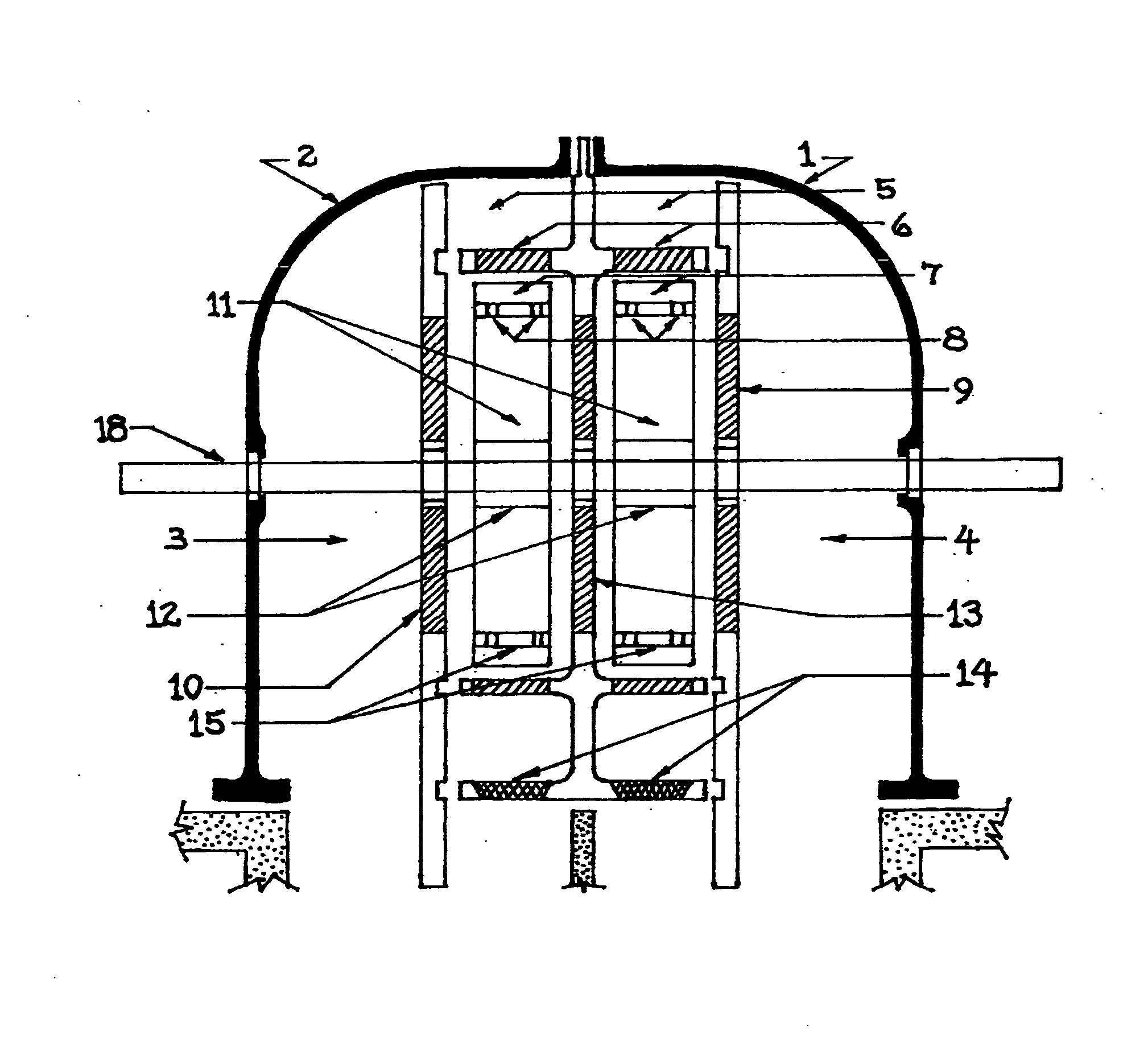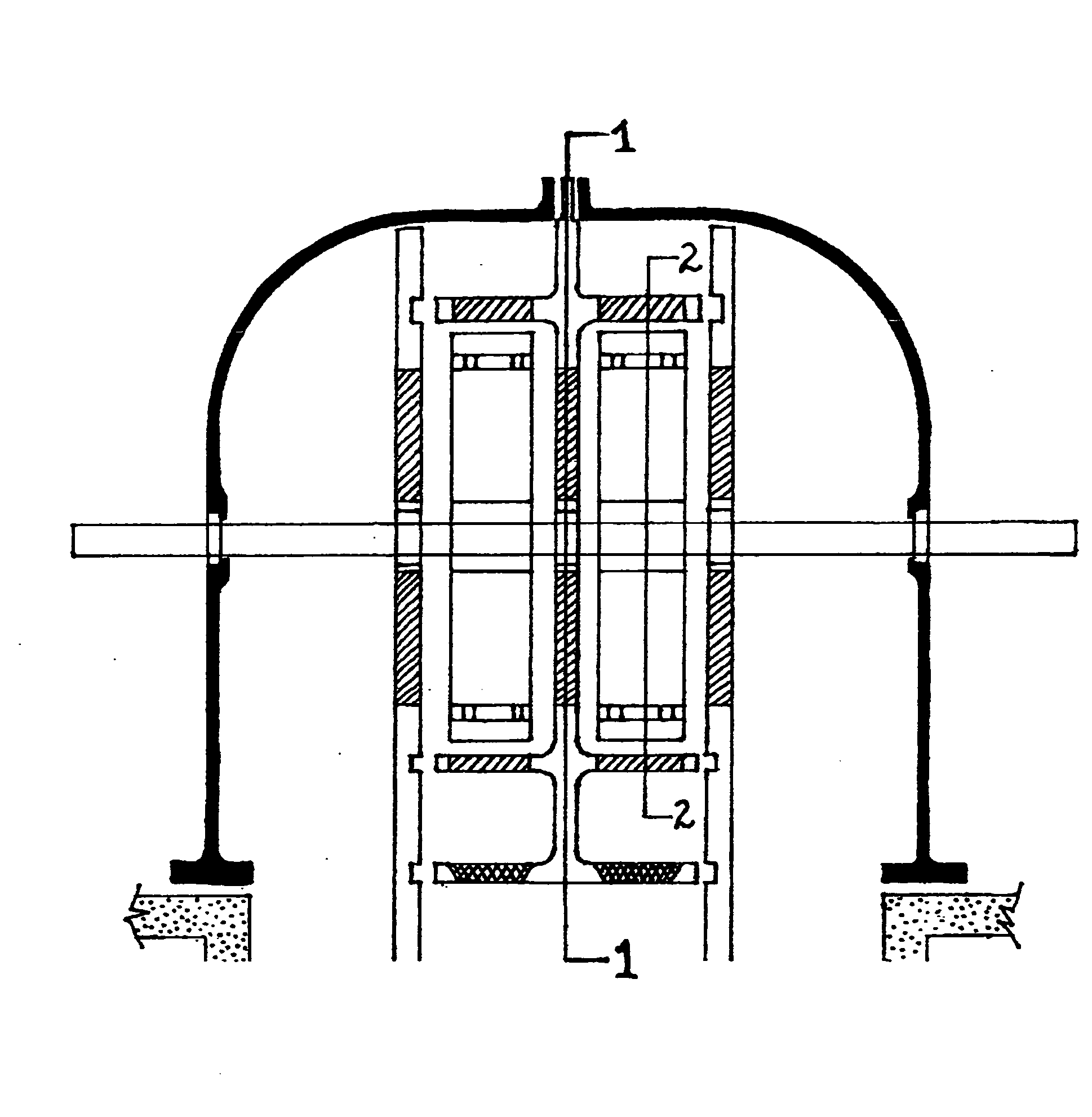Wave energy turbine for oscillating water column systems
a technology of wave energy turbine and oscillating water column, which is applied in the direction of electric generator control, couplings, fluid couplings, etc., can solve the problems of unique challenges of oscillating water column systems, performance and efficiency issues, and the design of wells continues to be challenged, and achieves simple and robust effects
- Summary
- Abstract
- Description
- Claims
- Application Information
AI Technical Summary
Benefits of technology
Problems solved by technology
Method used
Image
Examples
Embodiment Construction
[0048]The invention can be utilized in multiple applications where it could be employed by other WEC developers as a useful energy extraction PTO subsystem in their own OWC-based devices. Some of these applications could serve near and off shore systems such as anchored buoy farms where each buoy could support one or more turbines. Other applications would have the turbine attached to the legs or support structure of off shore oil platforms or other floating structures that have a suitable wave climate. Smaller turbine assemblies would work well as a power source for navigational or data acquisition buoys.
[0049]The most useful application for the current invention would be as a shore-based turbine, built into new or existing jetties, breakwaters or piers. Shore-based turbines can be housed in pre-cast concrete utility vaults where all the electrical generating and grid conversion devices can function together in a dry environment. The shore-based turbines would allow for easy mainte...
PUM
 Login to View More
Login to View More Abstract
Description
Claims
Application Information
 Login to View More
Login to View More - R&D
- Intellectual Property
- Life Sciences
- Materials
- Tech Scout
- Unparalleled Data Quality
- Higher Quality Content
- 60% Fewer Hallucinations
Browse by: Latest US Patents, China's latest patents, Technical Efficacy Thesaurus, Application Domain, Technology Topic, Popular Technical Reports.
© 2025 PatSnap. All rights reserved.Legal|Privacy policy|Modern Slavery Act Transparency Statement|Sitemap|About US| Contact US: help@patsnap.com



